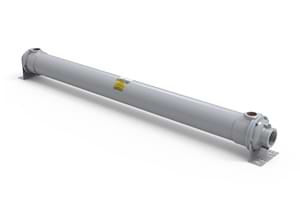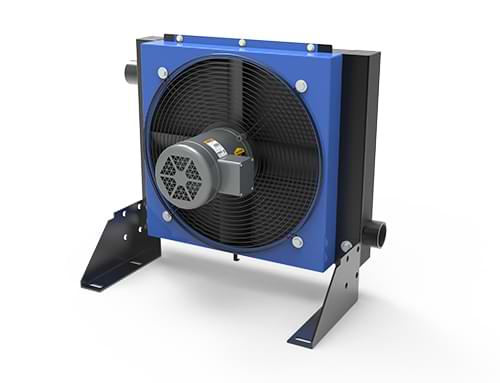Aftercoolers for Spray Painting
The process involves atomizing paint into a fine mist and directing it onto a surface using a spray gun, typically powered by compressed air or other mechanisms. While it’s an efficient and effective method, the quality of the finish depends heavily on several factors, including the tools and equipment used. One often-overlooked but critical component in spray painting is the aftercooler, which plays a vital role in ensuring a high-quality outcome.
Water Cooled Aftercoolers
Compressor Cooling
- Fixed or Removable Tube Bundles
- Material Options Available
- Standard and Custom Options

Air Cooled Aftercoolers
Compressor Cooling
- Use Ambient Air to Cool
- Variety of Motor Options
- Standard Pressures of Up To 250 psi

Moisture Removal for Spray Painting
An aftercooler is a device used in compressed air systems to cool the air after it has been compressed. When air is compressed, it heats up significantly, and this hot air can carry moisture and oil contaminants. If this untreated air is fed directly into a spray gun, it can compromise the paint application process. The aftercooler works by reducing the temperature of the compressed air, allowing moisture to condense and be removed before it reaches the spray gun. This results in cleaner, drier air—essential for achieving a flawless paint finish.
Here’s Why Aftercoolers Are So Important in Spray Painting:
- Moisture Prevention: Warm, humid air can introduce water droplets into the paint stream, leading to defects like bubbling, fisheyes, or uneven drying. Aftercoolers remove this moisture, ensuring a smooth application.
- Contaminant Reduction: Oil and debris from the compressor can mix with the paint, ruining the finish. By cooling the air and filtering it, aftercoolers minimize these contaminants.
- Consistent Pressure: Cooler air is denser, which helps maintain stable air pressure in the spray gun, preventing sputtering or inconsistent spray patterns.
- Improved Paint Adhesion: Dry, clean air ensures the paint adheres properly to the surface, reducing the risk of peeling or flaking over time.
Without an aftercooler, the spray painting process becomes a gamble. For professionals and hobbyists alike, investing in this equipment can mean the difference between a professional-grade finish and a costly redo. In industries like automotive painting, where precision and durability are non-negotiable, aftercoolers are standard practice. Even for smaller projects, the benefits—fewer imperfections, better efficiency, and longer-lasting results—make aftercoolers indispensable. By controlling the quality of the air, they elevate spray painting from a simple task to an art form.


